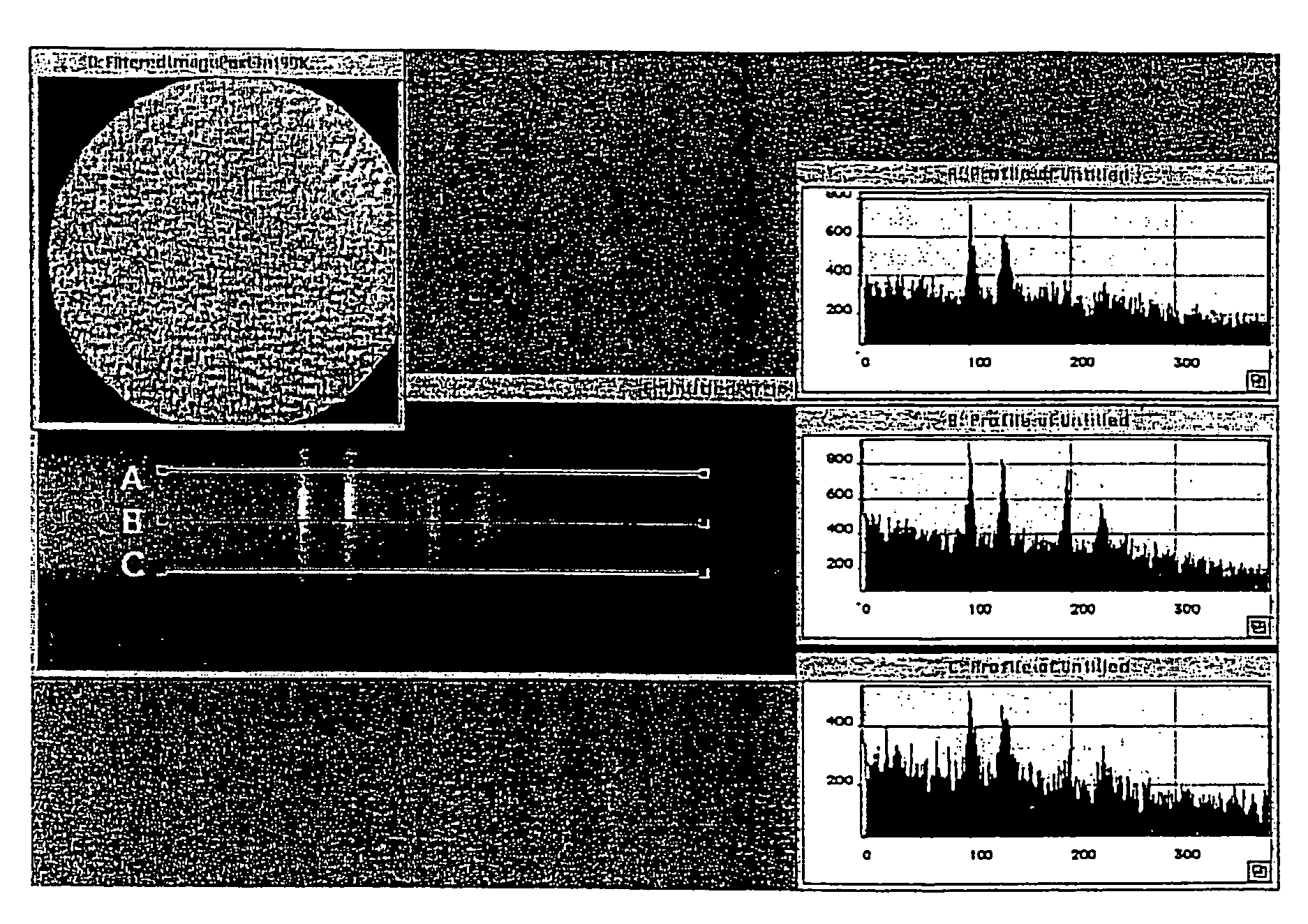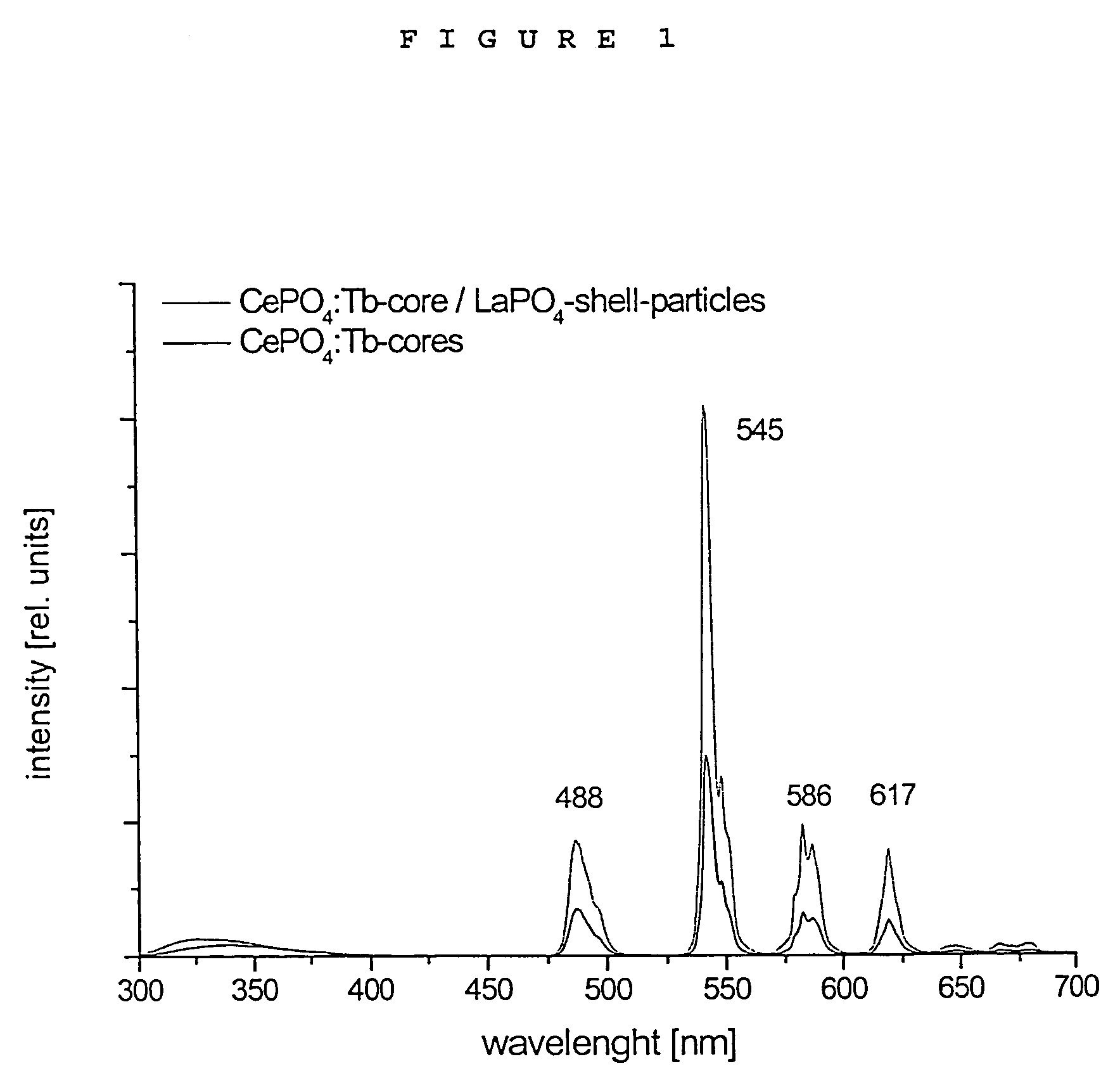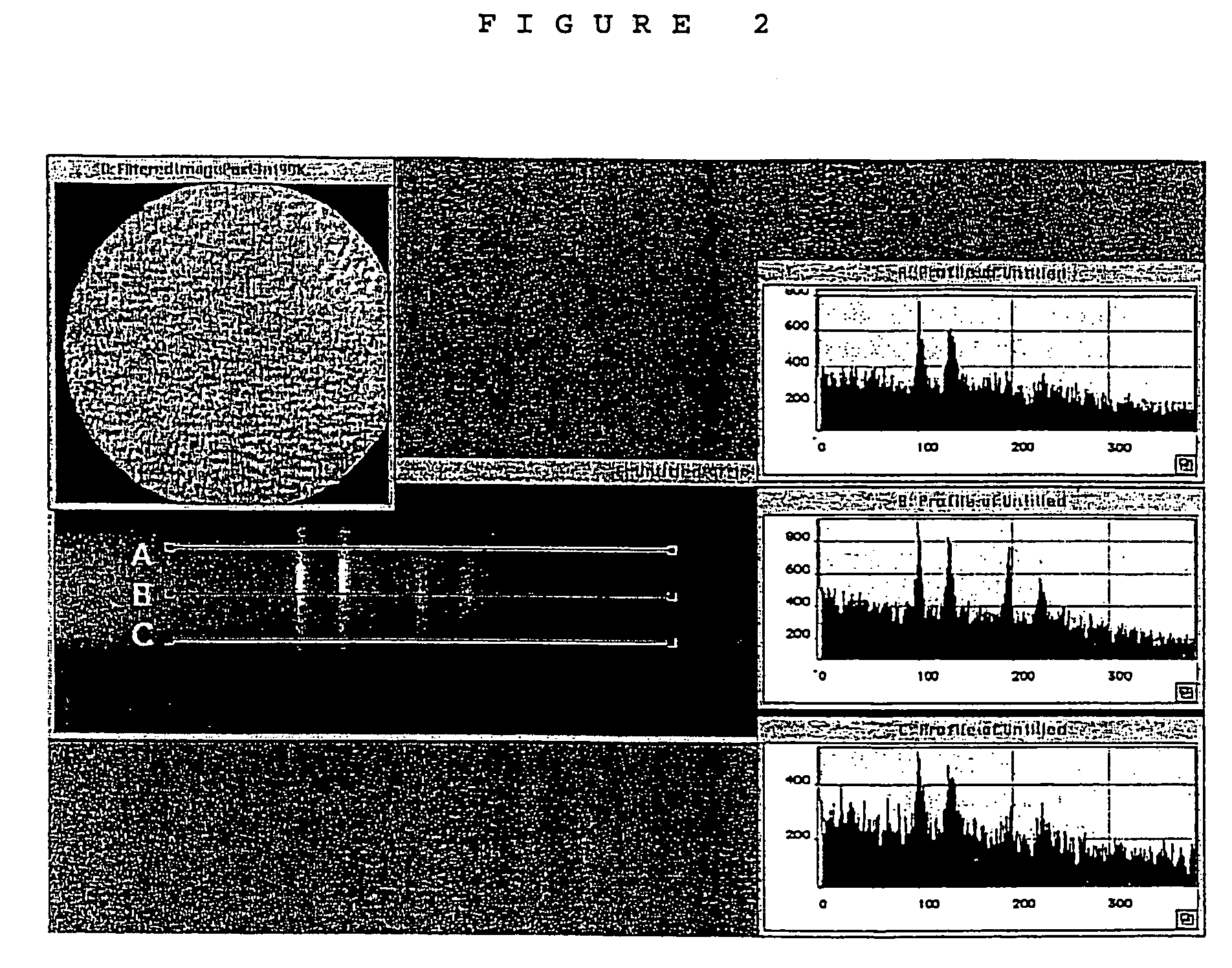Luminescent core/shell nanoparticles comprising a luminescent core and method of making thereof
a technology of luminescent core and nanoparticles, which is applied in the direction of nanotechnology, applications, coatings, etc., can solve the problems of large energy transfer obstacles, large size dependence of emission, and increase of surface luminescence quenching phenomena, so as to prevent or reduce energy transfer
- Summary
- Abstract
- Description
- Claims
- Application Information
AI Technical Summary
Benefits of technology
Problems solved by technology
Method used
Image
Examples
example 1
CePO4:Tb Nanoparticle Cores Having a LaPO4 Shell
[0172]In a 100 ml round-bottom flask provided with a high performance reflux condenser, temperature probe and a heating mantle, 2.79 g (7.5 mmol) CeCl3×7H2O and 0. 934 g (2.5 mmol) TbCl3×6H2O were dissolved in about 10 ml methanol, followed by adding 10.9 ml (40 mmol) tributylphosphat to the solution. As the next step, methanol is removed under vacuum at a temperature of 20° to 30° C. Then, 30 ml diphenyl ether is added and the remaining volatile ingredients, primarily crystallization water, are distilled off under vacuum at 80° C.
[0173]In a second flask, dry ortho-phosphoric acid (20 mmol) is dissolved in 10 ml tetraethyleneglycol dimethylether.
[0174]10.2 ml (30 mmol) trihexylamine and 7.0 ml (14 mmol phosphoric acid) of ortho-phosphoric acid / tetraethyleneglycol dimethylether solution are added to the above CeCl3 / TbCl3 solution, followed by heating to 200° C. over 24 hours under reflux. After this period of time, a clear dispersion (“...
example 2
BaSO4:Eu(II) Nanoparticle Cores Having a BaSO4 Shell.
[0186]In a 50 ml round-bottom flask provided with a high performance reflux condenser, a temperature probe and a heating mantle 540 mg (2.2 mmol) BaCl2×2H2O are dissolved in a methanol / water mixture (5 ml, 50 / 50 v / v). Then 10 ml DMSO and 545 mg imidazol (8 mmol) are added. After applying vacuum to this round-bottom flask, methanol and water are firstly removed at room temperature (1 to 2 hours) and then at 35° C. (2 hours).
[0187]In a further flask, 1.32 g (3.9 mmol) tetrabutylammonium hydrogensulfate is dissolved in 10 ml DMSO.
[0188]0.401 g (1.8 mmol) EuCl2 is added to the above BaCl2 solution, followed by the addition of the aforementioned tetrabutylammonium hydrogensulfate solution in DMSO. The reaction mixture is heated to 170° C. over 30 minutes which leads to a clear dispersion (“first mixture”) of BaSO4:Eu(II) nanoparticle cores.
[0189]In a second 100 ml round-bottom flask provided with a high performance reflux condenser, a ...
example 3
NdPO4 Nanoparticle Cores Having a GdPO4 Shell
[0190]In a 100 ml round-bottom flask provided with a high performance reflux condenser, a temperature probe and heating mantel, 3.0 g (8.4 mmol) NdCl3×7H2O are dissolved in about 6 ml methanol followed by adding 37 ml tris-2-ethylhexylphosphat (TEHP) to the resulting solution. A vacuum is applied to the round-bottom flask in order to remove methanol and crystallization water, firstly at room temperature (1 to 2 hours) and then at 50° C. (several hours).
[0191]In a second flask, dry ortho-phosphoric acid (20 mmol) is dissolved in 5 ml tetraethyleneglycol dimethylether.
[0192]Under a nitrogen atmosphere and at 50° C., 12.0 ml (27.4 mmol) trioctylamine and 2.1 ml ortho-phosphoric acid / tetraethyleneglycol dimethylether mixture are added to the NdCl3 solution in TEHP. Thereafter the mixture is heated 16 hours to 200° C. After this period of time, a clear dispersion (“first mixture”) of NdPO4 particles is obtained.
[0193]In a second 100 ml round-b...
PUM
| Property | Measurement | Unit |
|---|---|---|
| diameter | aaaaa | aaaaa |
| temperature | aaaaa | aaaaa |
| sizes | aaaaa | aaaaa |
Abstract
Description
Claims
Application Information
 Login to View More
Login to View More - R&D
- Intellectual Property
- Life Sciences
- Materials
- Tech Scout
- Unparalleled Data Quality
- Higher Quality Content
- 60% Fewer Hallucinations
Browse by: Latest US Patents, China's latest patents, Technical Efficacy Thesaurus, Application Domain, Technology Topic, Popular Technical Reports.
© 2025 PatSnap. All rights reserved.Legal|Privacy policy|Modern Slavery Act Transparency Statement|Sitemap|About US| Contact US: help@patsnap.com



